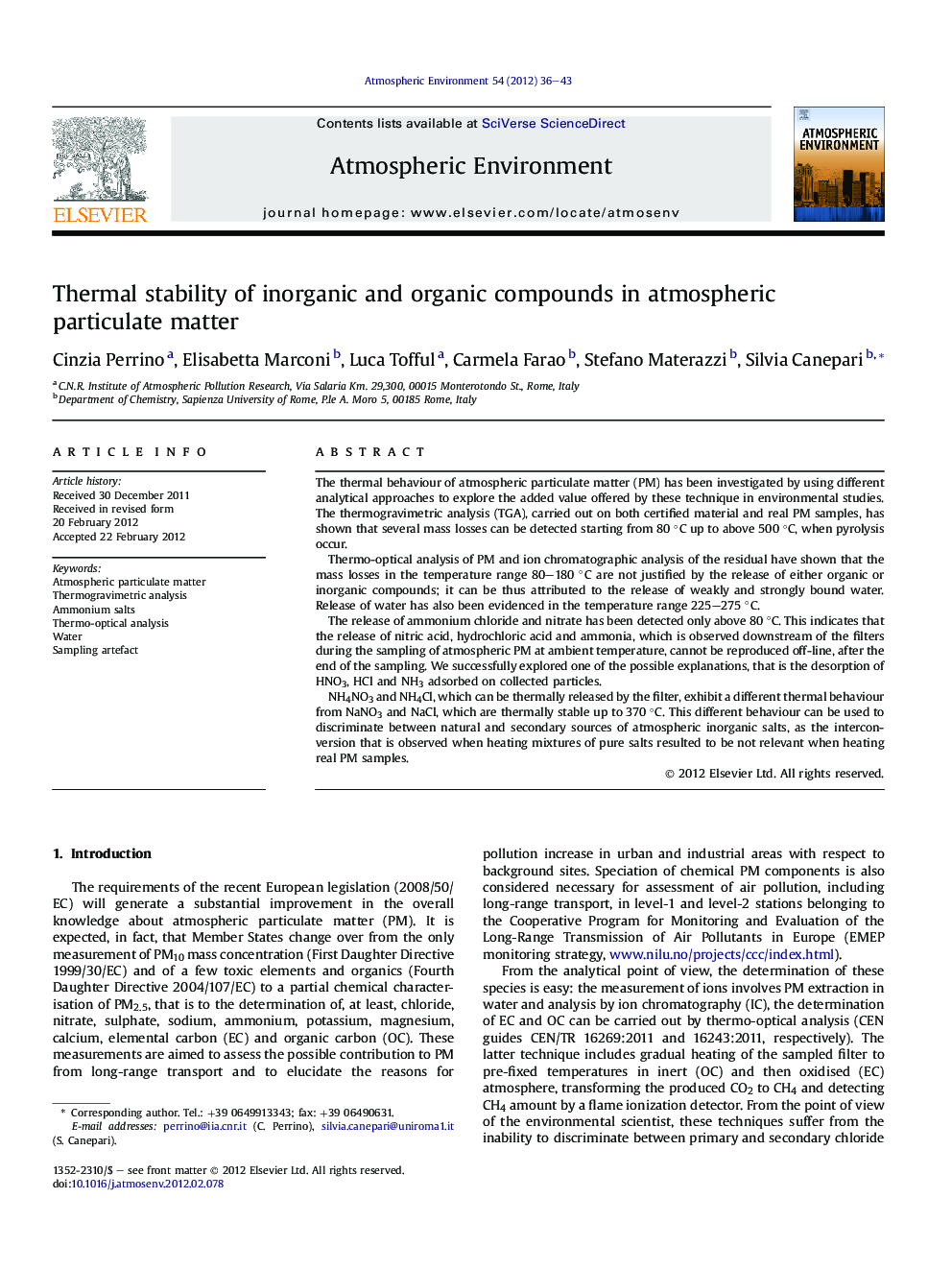| کد مقاله | کد نشریه | سال انتشار | مقاله انگلیسی | نسخه تمام متن |
|---|---|---|---|---|
| 4438768 | 1620417 | 2012 | 8 صفحه PDF | دانلود رایگان |

The thermal behaviour of atmospheric particulate matter (PM) has been investigated by using different analytical approaches to explore the added value offered by these technique in environmental studies. The thermogravimetric analysis (TGA), carried out on both certified material and real PM samples, has shown that several mass losses can be detected starting from 80 °C up to above 500 °C, when pyrolysis occur.Thermo-optical analysis of PM and ion chromatographic analysis of the residual have shown that the mass losses in the temperature range 80–180 °C are not justified by the release of either organic or inorganic compounds; it can be thus attributed to the release of weakly and strongly bound water. Release of water has also been evidenced in the temperature range 225–275 °C.The release of ammonium chloride and nitrate has been detected only above 80 °C. This indicates that the release of nitric acid, hydrochloric acid and ammonia, which is observed downstream of the filters during the sampling of atmospheric PM at ambient temperature, cannot be reproduced off-line, after the end of the sampling. We successfully explored one of the possible explanations, that is the desorption of HNO3, HCl and NH3 adsorbed on collected particles.NH4NO3 and NH4Cl, which can be thermally released by the filter, exhibit a different thermal behaviour from NaNO3 and NaCl, which are thermally stable up to 370 °C. This different behaviour can be used to discriminate between natural and secondary sources of atmospheric inorganic salts, as the interconversion that is observed when heating mixtures of pure salts resulted to be not relevant when heating real PM samples.
► We studied the thermal behaviour of inorganic ions and organic matter in PM.
► TGA weight loss at temperatures below 150 °C can be mainly attributed to water.
► After the end of the sampling, ammonium salts on filters are stable up to about 80 °C.
► Thermal analysis helps in detecting natural/secondary contribution to Cl− and NO3−.
Journal: Atmospheric Environment - Volume 54, July 2012, Pages 36–43